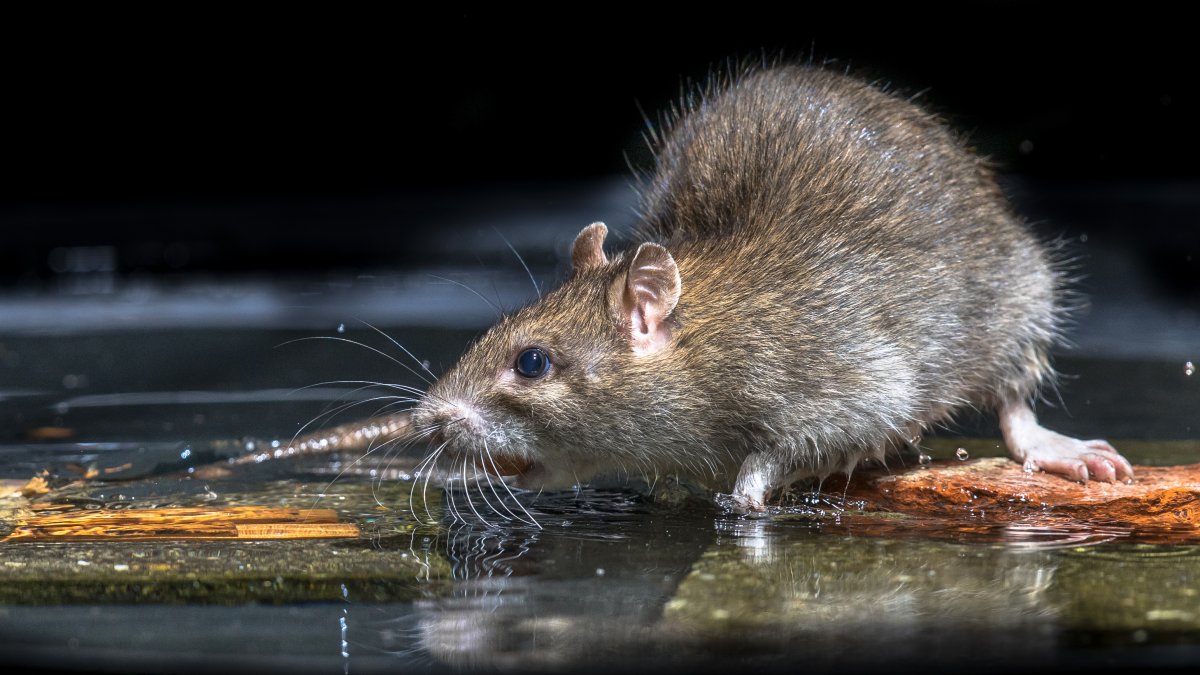Thousands of dead and dying rats have washed up on beaches in a small Australian coastal town, much to the disgust and horror of the locals.
The rodents drifted ashore in the fishing town of Karumba in the north of Queensland, around 460 miles west of Cairns.
Locals and tourists alike have uploaded videos of the rat infestation to social media, showing the critters clogging up the beaches and a nearby river with their furry bodies.
"When the moon came over the town last night, the river was well and truly alive with the bodies of rats," commercial fisherman Brett Fallon told local news outlet ABC North West Queensland.
The drowned rats have begun to decay, creating a horrific stench near the water's edge—much to the dismay of the locals and their tourist customers.

"They are jumping into the water and trying to swim but end up drowning and washing back up on the beach leaving a horrible smell," Jemma Probert, owner of Kerry D Fishing Charters, told 7NEWS.
The living rats have been running amok in the town for around a month, causing chaos by chewing through irrigation in gardens and car electronics, entering homes, and clambering around boats.
"They have tried to crawl onto our boat while we are fishing with customers on board and we have had to flick them off with a stick," Probert said.
The reason for this sudden plague of rats on the town's beaches may be because of a population boom in the rodents, thanks to the record wet season earlier this year that provided them with a glut of food and ideal conditions to breed. Rodent populations in Australia have been on the rise since 2021, according to the Commonwealth Scientific and Industrial Research Organisation (CSIRO).
"The plague is actually being caused by a native Australian species, not an introduced rat. The Long-haired (or Plague) Rat (Rattus villosissimus) is generally found in arid parts of the Northern Territory, Queensland, South Australia and Western Australia," Robert Davis, a senior biology lecturer at Edith Cowan University, told Newsweek.
"It is usually uncommon and lives in wetter areas and holes in the ground. During unusual periods of floods and high rainfall, the productivity of the landscape increases at large scales, and this stimulates a large increase in the birth rate of this native rat. It can then explode in population size, reaching densities of hundreds of animals per hectare and expanding to cover areas of up to 130,000 square kilometers."
Davis explained that these periods of "plagues" occur once every 3 to 17 years.
"During these times they can produce 12 young every three weeks, quickly consuming resources and expanding at up to 3km per night. The species is largely herbivorous but may become carnivorous and even cannibalistic during plagues."
It's thought that these huge numbers of rats are attempting to swim out to nearby islands in search of more food at low tide. They then drown on the return journey after the tide has come back in, washing up in large numbers on the beaches.
Several other towns across Queensland have also seen recent plagues of rats and mice, which are defined by CSIRO as at least 800 to 1,000 rodents per hectare. The towns of Winton, Richmond, Julia Creek, Cloncurry and Ingham have been overrun by the rodents in recent months, destroying crops and contaminating water.
"Presumably the rats have followed the favorable conditions from inland, and as things are drying out there they have migrated towards the coast and eventually ended up in the ocean, possibly trying to escape the heat or otherwise just by chance or trying to find more land," Davis said. "Also flash flooding and other events will certainly wash animals down waterways to the coast."

The mass deaths of the rats in Karumba may actually be good news for the community, as it could mean that their plague is on its way out and that the rats may have run out of food.
"As this is a natural phenomenon that is driven by a run of unusual wet years such as was recently experienced in eastern Australia, there is nothing that can be done as such," Davis said. "Trying to seal up houses and grain infrastructure is the best approach, but I caution against the widespread use of second-generation anticoagulant rodenticides which could lead to extensive secondary poisoning of native wildlife including rare birds of prey such as the Letter-winged Kite which follow these eruptions of rats."
Update 11/27/23, 11:24 a.m. ET: This article was updated with comment from Robert Davis.
Do you have a tip on a science story that Newsweek should be covering? Do you have a question about rats? Let us know via science@newsweek.com.
Uncommon Knowledge
Newsweek is committed to challenging conventional wisdom and finding connections in the search for common ground.
Newsweek is committed to challenging conventional wisdom and finding connections in the search for common ground.
About the writer
Jess Thomson is a Newsweek Science Reporter based in London UK. Her focus is reporting on science, technology and healthcare. ... Read more
To read how Newsweek uses AI as a newsroom tool, Click here.






